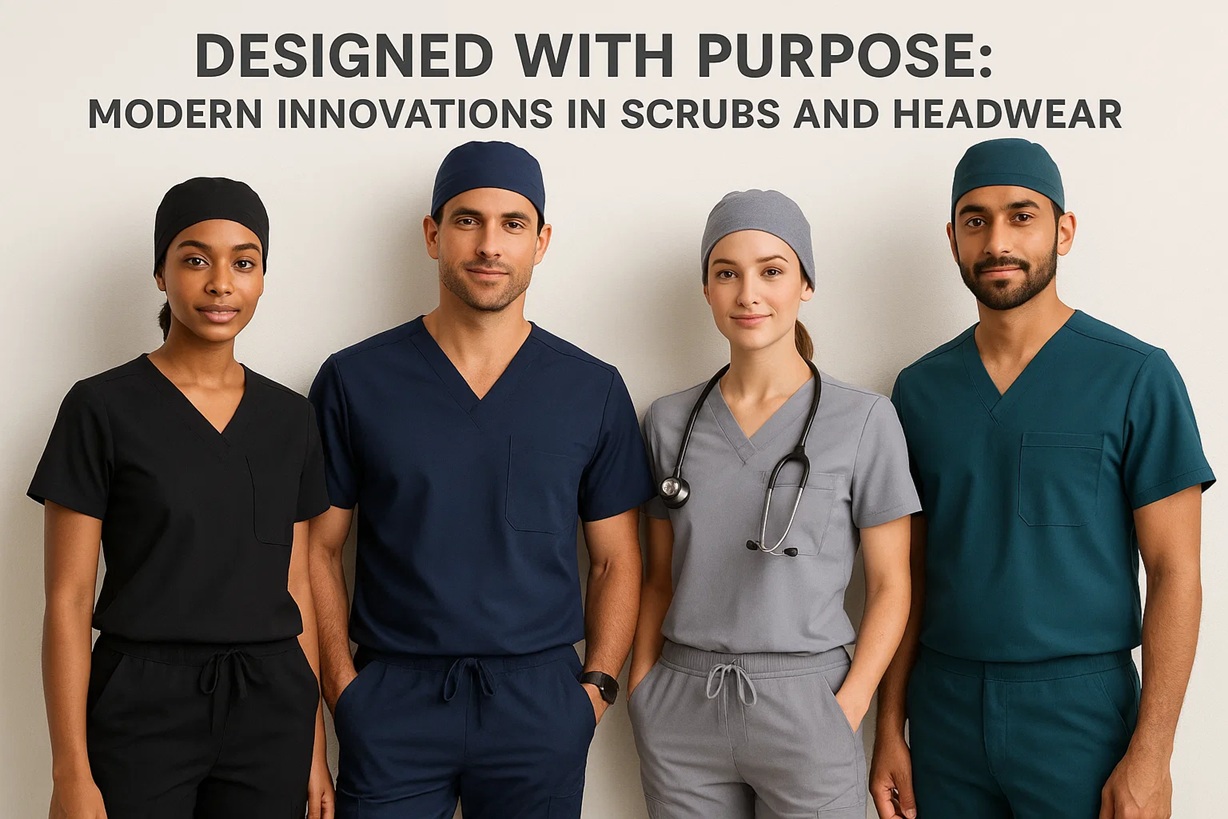Medical professionals demand workwear that balances durability, hygiene, and comfort—and today’s scrubs and headwear are meeting those expectations better than ever. The days of boxy, one-size-fits-all uniforms are long gone. Now, healthcare attire is undergoing a transformation, combining functional innovation with thoughtful design to better serve the needs of the medical community.
The Evolution of Medical Workwear
Traditionally, scrubs were purely utilitarian: shapeless garments in basic colors, designed for easy laundering and mass use. But modern healthcare environments demand more. Professionals are on their feet for long hours, performing physically and emotionally taxing work. Their clothing must move with them, support comfort, and promote professionalism.
Today’s scrubs are being developed with that in mind. Brands are utilizing performance fabrics that wick moisture, resist stains, and offer stretch for better mobility. Antimicrobial properties are also becoming a staple, offering an added layer of protection against pathogens. These innovations not only enhance the user experience but also promote a safer, more hygienic environment for both the wearer and the patient.
Purpose-Driven Fabric and Fit
One of the key innovations in medical attire lies in the fabric. Modern scrubs now incorporate blends that include spandex for flexibility, polyester for durability, and cotton for breathability. This fusion of materials results in garments that are both comfortable and long-lasting, even after repeated washing.
Fit is another area where significant progress has been made. Custom tailoring and ergonomic cuts have replaced generic sizing, ensuring a professional appearance while allowing free range of motion. Options for petite, tall, and plus sizes ensure inclusivity and accessibility for every body type.
Websites like www.blueskyscrubs.com have become go-to destinations for healthcare professionals looking for scrubs that check all the boxes—comfort, quality, style, and functionality. With a wide variety of fits, colors, and designs, they exemplify how medical uniforms can be both purposeful and fashion-forward.
Scrub Caps with Style and Substance
Headwear is also getting a modern makeover. Scrub caps, once seen as purely practical, are now viewed as extensions of personal style and safety gear. Healthcare workers can choose from ponytail-friendly caps, tie-back styles, and bouffant options to match their needs and preferences.
These caps often feature breathable linings, adjustable fits, and fun prints—allowing professionals to maintain hygiene standards without sacrificing individuality. Matching or coordinating caps with scrub sets also helps project a polished and professional image, especially in surgical and high-visibility roles.
Functionality Meets Fashion
Perhaps one of the most appreciated changes in medical attire is the emphasis on personal expression. While maintaining a professional look, medical scrubs now come in a variety of colors, patterns, and cuts. This shift allows healthcare workers to showcase a bit of their personality in an otherwise clinical environment.
Pocket placement, badge loops, and utility designs are all being refined to increase practicality. A well-placed chest pocket or a hidden compartment for small essentials can make a big difference during a long shift. Designers are actively listening to feedback from those on the front lines to continuously improve these small but meaningful details.
Setting the Standard for the Future
As healthcare demands grow, so too does the need for smart, efficient, and comfortable uniforms. Modern scrubs and headwear are now viewed as tools that support healthcare professionals—not just garments they wear. With companies like www.blueskyscrubs.com leading the charge in combining innovation with intention, the future of medical workwear looks brighter, cleaner, and more human-centric than ever before.
Ultimately, when scrubs are designed with purpose, everyone benefits—patients feel more confident in their caregivers, and professionals can focus fully on the life-saving work they do every day.








